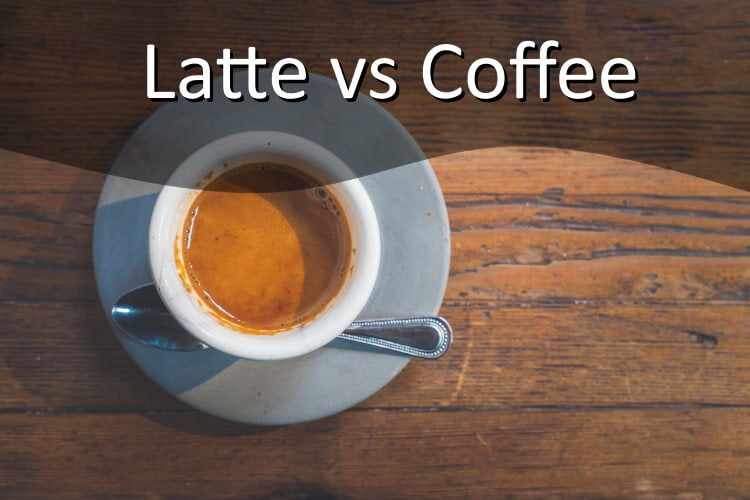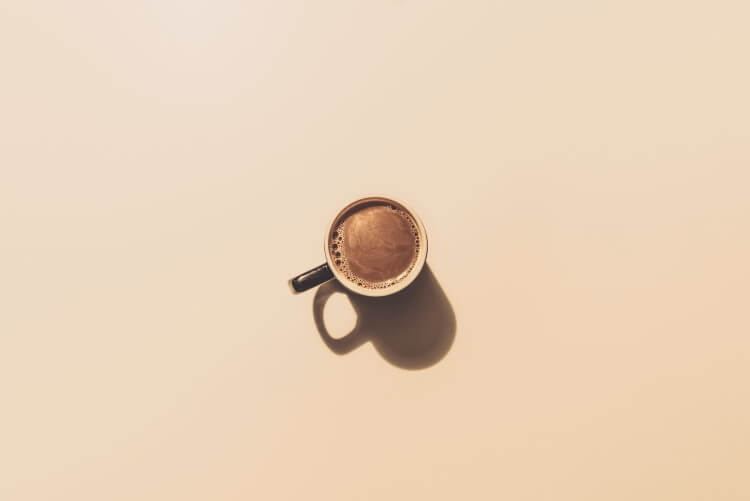
Latte Vs Coffee: What is the Difference?
Latte vs Coffee
When preparing coffee at home, you probably don't think much about it, nor are you in a state of mind to think at all. You pick your coffee, your favorite mug and maybe choose your preferred coffee machine, but it is all part of your routine! However, if you are trying to get into the habit of drinking new coffees and espresso drinks, you probably need to know the difference between latte vs coffee.
In this guide we will break down the differences between a latte and a cup of coffee, how to make each of them and which ones we recommend. If you don't already have the perfect latte maker, we recommend buying one. Anyways, let's get to it!
What Is Coffee?

If you are looking for a more sophisticated (and delicious) alternative to your instant cup of coffee, you will love drip coffee. This is a type of coffee that was initially developed in Germany between 1908 and the 1950s. However, today, it is most used and appreciated in the US.
Unlike other types of coffee where the ground beans are compressed, pressurized, or submerged in hot water, drip coffee is made by allowing hot water to flow through ground coffee enclosed in a filter. Drip coffee is cheap, simple and easily repeatable which is why it has become the go-to.
Drip coffee can also be made without a machine, allowing water to flow through the grounds and directly into a cup. This is called Pour Over Coffee which we actually prefer at Black Ink!
Or, for convenience and speed, you might use an electric coffee maker. These machines incorporate a carafe, larger water bladders, and a more spacious coffee basket. So, you can make more than one cup of coffee at once.
The term “drip” in the name drip coffee is used specifically to distinguish this type of black coffee from other common types of brews, including Espresso and Americano. In the US, the word "coffee", when referring to that warm beverage most of us drink, is actually drip coffee. In other countries, the word "coffee" actually may refer to a shot of espresso.
How to Brew Coffee

Brewing drip coffee is not complicated and represents a process that any coffee lover can attempt, and master, when equipped with the right tools! There are two methods you can follow: with or without a drip coffee maker. Check them both out below. Before you ask how much coffee to measure out per cup, it all depends on your brewing style!
With a coffee maker
- Insert a filter filled with ground coffee in the coffee maker basket
- Make sure that the water reservoir at the back of the machine is filled with water.
- Make sure that the machine is plugged in and warm - ready to heat up the water!
- The water will flow from the reservoir into the coffee basket.
- The water will absorb the flavor and scent of the coffee grounds, so becoming coffee.
- It will then drip into the carafe.
Without a coffee maker (Pour Over Drip Coffee)
- You will need a dripper (we recommend the Chemex), a filter, and a carafe.
- Boil around 20oz of water
- Obtain at least 30g of ground coffee (if you don’t own a coffee grinder, you can also buy already ground coffee to use)
- Take the dripper and add a filter inside it. Depending on the type of filter, you might need to wet it with hot water before using it. Check the manufacturer’s instructions.
- Add the ground coffee into the basket formed by the filter in the dripper.
- Pour the hot water over the grounds, steadily and consistently. You will want to create spirals from the center of the coffee towards the edges and vice versa.
- Allow the water to drip through and into the carafe.
The Latte, What Is It?

A latte is a type of coffee created over an espresso base. Just like in the case of other coffee types (such as Cappuccino, Flat White, or Mocha), a latte is created as a mix of milk and espresso coffee.
Latte derives from the Italian term for "milk with coffee" or "caffè e latte." This is an Italian specialty that you will be able to find in most coffee bars. However, each country boasts a version of this type of coffee, including the French "Café au lait" and the German "Milchkaffee."
If you enjoy the latte, and are especially fond of the warm foam that sits on top of the cup, then you may want to try a cappuccino!
How to Prepare a Latte

If you have never indulged in a Latte, then you should have the first one at your favorite coffee bar. This allows you to explore the different flavors and understand what to expect before making it at home.
You can then try to create your perfect latte at home with just a few pieces of equipment.
- Start by pouring some milk into a jug. Fill it until the milk is in line with the beginning of the jug's spout.
- Heat the milk with the wand steamer of your coffee machine. Ideally, you should be preparing your espresso shot on the side with an espresso machine, or a similar device like the Nespresso maker.
- Keep heating the milk for 30 to 45 seconds until it reaches the temperature of 130 to 140℉.
- Allow the milk to settle while pulling your espresso shot. This moment gives a chance for the milk's foam to settle and become thicker.
- Once the espresso has been pulled, you can either add it into a little bit of your milk to prevent bitterness, or you can pour the milk into your cup containing the espresso.
- Add the milk, allow the frothed milk to enter your espresso cup and don't rush the process.
- The foamy part should be the last to leave the jug. If you are still working on your barista skills, you might decide to use a spoon or other utensil to pour the foam on top of the milk already in your mug or cup.
Once you are done pouring, you will now have a caffeinated beverage that boasts a small portion of coffee and a larger portion of milk. While it is recommendable to have a thin layer of foam on the top of your cup, it should not be as thick or stiff as the one on a Cappuccino.
If you have been sticking to a black coffee, or instant coffee, because you are committed to a plant-based diet or you are intolerant to dairy, then you can try a Latte with a milk alternative. These might include almond milk, soy milk, and coconut milk.
Are lattes bad for you?

At their core, a latte contains more fat and sugar when compared to a regular cup of black coffee, which means that it contains more calories. This is simply because of the fact that a latte uses a cup (or more) of milk. If you would like to cut down on the calories, you can always substitute your milk out for a milk alternative.
How Much Caffeine in a Latte
Generally speaking, a latte contains less caffeine when compared against a cup of regular drip coffee, ounce for ounce. For each shot of espresso in your latte, you can add roughly 75 milligrams of caffeine. If you are unsure how many shots of espresso there is in your latte, just ask your barista!
In case you don't know by now, blonde roast coffee, or light roast as most of you know it by, has more caffeine than darker roasts. The same holds true with espresso shots, or lattes for that matter. If you need the caffeine, avoid dark roast and stick with the lighter option for more caffeine.
Can you use regular coffee for a latte?

If you are trying to make a true latte, you will need a shot of espresso. However, if you use a strong, concentrated shot of coffee, and slightly less milk, most people wouldn't be able to tell the difference. In order to make a good latte, your milk consistency is just as important which is why we recommend a device that can make steamed milk, like a latte machine.
Iced Latte vs Iced Coffee
Now that we know the differences between a latte and a regular cup of coffee, what about iced lattes and iced coffee? To put it simply, the difference between an iced latte and an iced coffee is that an iced latte uses espresso whereas and iced coffee uses drip coffee. Unfortunately, when you make an iced latte, you will not have the thick and creamy milk foam as that of a regular latte.
Bottom Line
While your morning cup of coffee is undoubtedly part of your routine, there is nothing bad in switching up your habits now and then. So, you might try to prepare a coffee or a latte, depending on your mood and how much time you have that day. A drip coffee will fit most diets and can be prepared with or without a coffee maker.
On the other hand, the latte is perfect if you want a milder and creamier coffee that is mixed with milk! Generally speaking, both require the same amount of time and produce equally delicious end results. Be sure to check out our buying guides if you are in need of a better coffee machine or would like to invest in an espresso maker.
